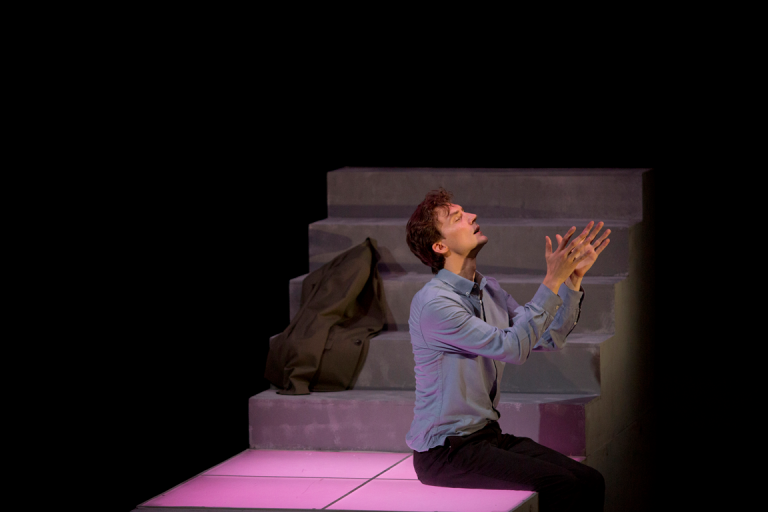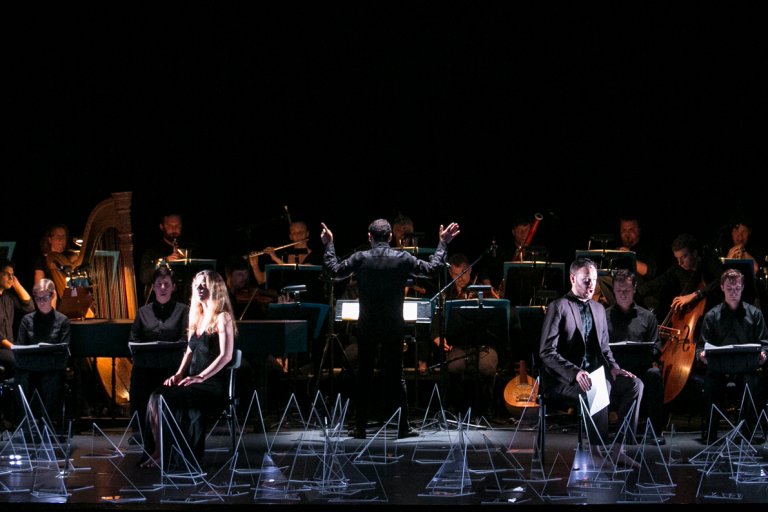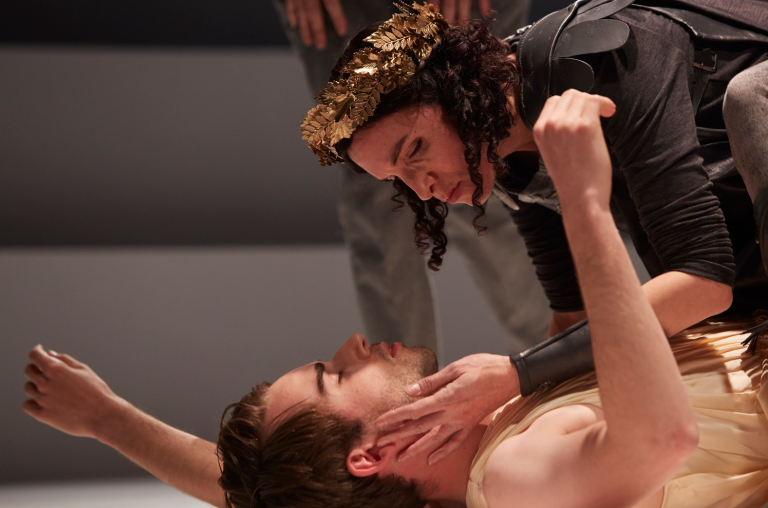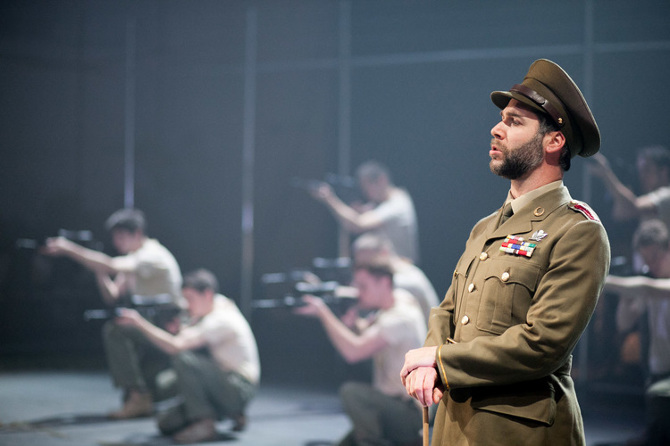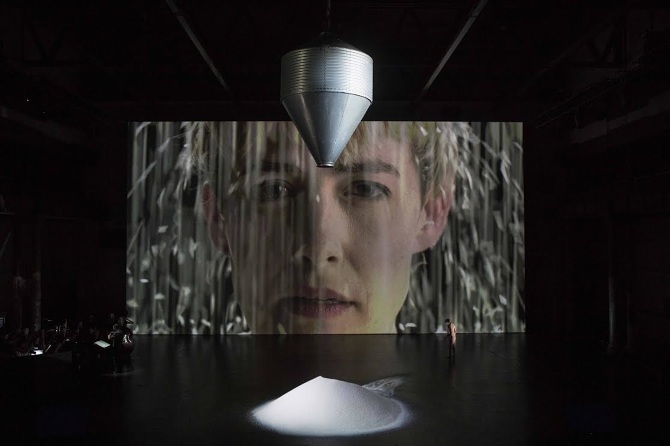The Art of Song
By Jack Symonds
In curating the four hours of voice-and-piano music that make up IN SONG, Jane Sheldon and I hope to shed a bit of light on a body of work we’re fanatically passionate about: modern art song. This pretentious genre title is unfortunate: it smacks of fusty music lectures about, say, German word painting in Schubert (wonderful as it is!), and a certain privileged, intellectual arrogance that seems to bedevil this repertoire. This music is seen as the preserve of the few and inaccessible to the many. “Art” song, indeed. I suppose the title is only useful to mark an arbitrary division with ‘popular’ song – and thereby consign this music to UNpopularity!
However, tarnishing the staggering creative, musical and linguistic achievement of song composers firing on all cylinders with the stain of elitism surely misses the point. Just revel in the outrageous, transcendent level of invention; a riot of musical and poetic colour joined together in ever-surprising ways. Subjects and ideas you never thought you needed to experience through the music-poetry filter pop up where you least expect them. Who knew that Goethe had a thing for types of cloud, and that Pascal Dusapin would, almost 200 years later, find a staggeringly apposite musical language for this strange sidebar in German romantic poetry? This is modern artsong, and it needs no apology.
..."How could this genteel, moustachioed hanger-on from the French Romantic create something so deeply unstable, couched in a world of gently perfumed purity?"
Attempting to navigate a path through this bewildering and diverse musical landscape required some hard choices and inevitable omissions. I am devastated no place could be found for one of the grandest cycles of them all: Hindemith’s Das Marienleben, or one of the sparest and most withering expressions of anything, Shostakovich’s Michelangelo Suite. Henze’s Arabian Songs was likewise left, tragically, on the shelf, though it’s always good to leave oneself somewhere to go in the future…
Now, a little bit of an introduction to the choices we DID end up making.
PART ONE | Programs One & Two
Fauré and Schoenberg: this early 20th century pair both created visionary ‘gardens’ in their largest and most ambitious song cycles for voice and piano. And how different could they possibly be – on the surface, at least. Playing Fauré’s La chanson d’Ève (1910), I am struck by the hugely challenging paradox of having to maintain a perfectly unbroken surface of self-similar patterns while simultaneously illuminating the truly monumental and startling harmonic universe that whips by at an unpredictable orbit beneath. How could this genteel, moustachioed hanger-on from the French Romantic (whose middle name was indeed ‘Urbain’!) create something so deeply unstable, couched in a world of gently perfumed purity? He has created the rarest thing of all in music: a total and genuine reinvention of all our notions of tonality and consonance without ever puncturing its delicate skin. The performance style is utterly different from Schoenberg’s The Book of the Hanging Gardens (1909), which teeters on the brink between Romanticism and Expressionism, all its suppurating wounds exposed, demanding a constant, passionate representation of its depiction of a world and a language in a state of decadent decay. How could we not put these two great, polar opposite works on the same day and surround them with orbiting satellites from the more than hundred years since their composition?
The path from Schoenberg to the exquisite dodecaphonic miniatures of Luigi Dallapiccola is clear: Dallapiccola was the first Italian composer to embrace Schoenberg’s reinvention of pitch in twelve-tone serialism yet how utterly different from Schoenberg and his students this music sounds! The gossamer threads of these newly minted chords light up Machado’s gnomic reflections on the turning of the seasons, just as Pascal Dusapin’s Wolken on those Goethe poems about clouds seems the most natural aerial extension from Fauré’s rarefied garden.
SCO audiences may remember that we spent a summer with Dusapin in 2016’s Sydney Festival, presenting his large opera Passion and the song-cycle/stage work O Mensch! in the space of a week.
Both these programs have small, impactful cycles by the living master György Kurtág. These abutting opus numbers are spectacular examples of Kurtág’s art of seeming to compress the history of European music into hyper-dense miniatures of only a few minutes. To hear them sung by different singers will hopefully give a rounded view of this frighteningly intense music. These two cycles from the 1980s are like synecdoches for the whole 19th and 20th century art of voice and piano, and it is a joy to reconnect with his music after SCO staged the monumental song cycle …pas à pas – nulle part…. in 2014.
Of course, this being SCO, we couldn’t resist continuing the journey with new works by Australian composers. Along with Fauré, Dusapin and Kurtág, Jane Sheldon will premiere Mary Finsterer’s Nearing Circumpolar, a song cycle based on Mary’s upcoming opera Antarctica. SCO premiered Mary’s first opera Biographica in 2017 (which you can watch here) and has crafted another ‘nature’ work to complement Dusapin and Fauré: a world of ice, white silence and the billions of tiny creatures under the surface of the frozen sea.
Anna Fraser, along with Schoenberg, Dallapiccola, Kurtág and Boulanger will sing David Evans’s In my brain, an extreme and disturbing setting of Emily Dickinson’s classic “I felt a funeral in my brain”. This long single song feels like a cycle, vacillating as it does between mechanistic, brutal and harsh streams of text and warm cushions of velvety tonality that could have brought a smile to a French Romantic’s face. This Dickinson setting is also the ‘apology’ for not including in the series Aaron Copland’s wide-eyed and perfect Dickinson cycle.
PART TWO | Programs THREE & FOUR
Here we find a broader, more philosophical view of subject matter, and wilder swings of style. Simon Lobelson carries a heavy burden delivering both Benjamin Britten’s Songs and Proverbs of William Blake and Wolfgang Rihm’s Vermischter Traum. No survey of modern song cycles could omit Britten and this is perhaps my favourite: dark, late Britten shot through with the agony of existence. Written for Dietrich Fischer-Dieskau, this stern yet remarkably well-contrasted piece attempts to embrace William Blake’s eccentric world vision with chiselled precision, economy and that classic Britten style of text setting where you simply can’t imagine the words being sung any other way. SCO has quite a history with Britten – Owen Wingrave in 2013, The Rape of Lucretia in 2017.
Will there be more this year? Watch this space…
The Rihm is a recent (2017) work by the hugely prolific living German composer and provides a vital link back to the Schoenberg from the previous program as well as casting an expressive net much further back to Schubert, Schumann and Brahms. This piece is about as serious, heavy and German as you can get. When your first line (setting the grumpy Baroque poet Andreas Gryphius) is “What is this life? What are we?” there’s only one way to go, and Rihm takes us straight into the heart of the big questions of life and death, meaning and purpose. This is German art painfully aware of its own history and deeply moving in the music’s acknowledgement that these threads remain unresolved, even in the second decade of the 21st century.
In between these two big works is a treat: Ravel’s Histoires naturelles – pure delight from start to finish – where the traits of four birds and a little cricket are lightly satirised and anthropomorphised to form a surprisingly profound portrait of inter-species folly.
Emily Edmonds will deliver a program rooted in the pleasures and ecstasies of life and religion. If the Rihm and the Britten are existential, doubting works pleading for meaning in a Godless universe, Samuel Barber’s Hermit Songs are the perfect riposte. Ten reflections from anonymous monks in pre-modern monasteries, they contain a cosmic pleasure in the simple acts of praise, worship and solitude from which we could all learn. Barber really rose to the occasion with this glorious cycle, capturing the text with alternately devotional wonder and sparkling joy.
Barber adored the music of Francis Poulenc, who also could not be omitted from a survey of modern song. And Barber wasn’t the only one – it is hard music to resist. The ten minute song cycle Banalités is much, much more than its tongue-in-cheek title suggests. It is, in fact, a kaleidoscopic survey of Poulenc’s art, with each song reflecting a different side of his complex and winning personality. From breezy Parisian interwar insouciance to operatic drama, smoky eroticism and profound introspection, it seems to have it all.
If Poulenc’s sexy setting of the word ‘cigarette’ in “Hôtel” gets you going, then Kaija Saariaho’s Quatre instants (2002) is love-music on another level entirely. This is a 21st century song cycle saturated in the kind of ‘complex pleasure’ at which Saariaho is a true master. Written in the wake of her massively successful opera L’amour de loin and just before La Passion de Simone (which SCO performed in 2019) these four songs are vast in expression and imagination – an ocean of sound for just two performers. They are among the most complex things I’ve ever played – I can sense Saariaho’s imagination working overtime to make the piano into a huge resonating chamber seemingly capable of producing every pitch and rhythm simultaneously! These texts move from pure pleasure through pain and eventually reminiscence, culminating, at the end of more than 20 minutes of pulverising eroticism, in one of the most sheerly gorgeous codas written this century. By rights, here of course should be made mention of Messiaen’s ecstatically loopy Harawi (recently heard locally by The Song Company) which was too long for this program anyway, and the lovesick world of Janáček’s Diary of One Who Disappeared – presented just this January by SCO, staged in Sydney Festival.
Lastly – and one never likes to write too much about one’s own work – I had to pay tribute to both Emily Edmonds’s remarkable voice and the other music I have been thinking about all this time in my own small song cycle Nothing other than silence. A setting of an ecstatic, apocalyptic vision of the Flood myth from an oracle in The Epic of Gilgamesh (re-interpreted by SCO co-founder Louis Garrick) I have simply tried to capture some of the things I love about working with voice and piano: electric intimacy, and the seeming infinity of expression and colour that one can find in just two people on stage.
Keep in touch
General Inquiries
- contact@sydneychamberopera.com
-
SCO, Carriageworks
PO Box 3035 Redfern, NSW 2016
Postal Address -
SCO, Carriageworks
245 Wilson St Eveleigh, NSW 2015
Resident Address - (02) 8571 9106
